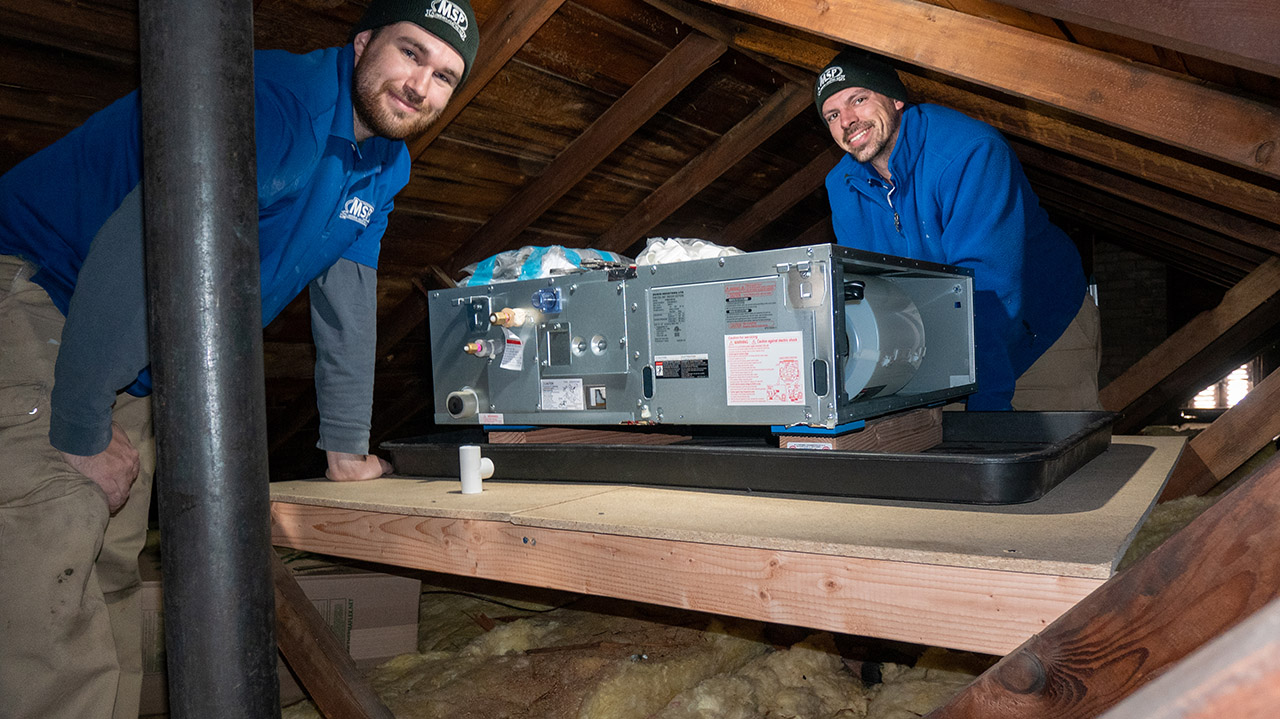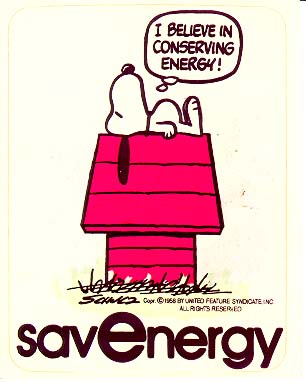
Have you ever met someone who’s a stickler for turning off the lights and adjusting the thermostat before leaving the house? Maybe you’re that person? Don’t worry if you are, you’re in good company with the Fresh Energy team! If you know or are one of these individuals, then you’re practicing good energy efficiency and conservation hygiene. But did you know that our gas and electric utilities are also charged with practicing good energy hygiene? Even though their main job is to sell you more units of energy, they must help you save energy as well—but why? This post will help demystify utility energy savings programs.
Energy efficiency simply means using less energy to perform the same task. Energy-efficient buildings and homes use less energy to heat, cool, and run appliances and electronics. Ways to improve efficiency include small steps, such as choosing LED light bulbs and energy efficient appliances, or larger efforts such as upgrading insulation and weatherization. Energy efficiency is one of the easiest and most cost-effective ways to reduce the use of fossil fuels and lower energy costs for consumers. It is also a vital component in achieving greenhouse gas emissions reductions goals through decarbonization.
Energy conservation is a related and often complimentary or overlapping way to achieve the same goal of reducing energy consumption. Energy conservation relies on people cutting back on activities that consume energy—by turning off lights or using appliances less often. Energy efficiency harnesses technology to help reduce energy waste so that you can still turn on the lights, heat your home, or wash your clothes but use less energy doing so.
The Conservation Improvement Program (CIP) is Minnesota’s bedrock energy efficiency policy. CIP helps Minnesota households and businesses use electricity and natural gas more efficiently by conserving energy, reducing carbon dioxide emissions, and lessening the need for new utility infrastructure. The program requires electric and natural gas utilities to invest a portion of their revenues in projects designed to reduce their customers’ energy consumption and improve efficiency. To better understand the role that CIP plays in Minnesota, let’s dive into the history of energy conservation and efficiency in Minnesota.
The energy conservation movement begins
For decades, the traditional utility’s profit-maximizing strategy was to sell more energy. This mentality began to change in the 1970s when the oil crisis put pressure on energy security and, as prices spiked, the notion of energy efficiency and conservation began to gain a foothold in the public consciousness. In response, policymakers began to develop strategies to reduce energy waste and use less energy to deliver the same or better services to consumers and businesses. The American Council for an Energy-Efficient Economy (ACEEE) was formed by energy efficiency researchers in 1980 with the mission to advance energy efficiency policies, programs, and technologies.
One way to see the effect of energy efficiency is to look at the relationship between energy use and gross domestic product (GDP). As shown in the graph below, the energy intensity (i.e., energy use per real dollar of GDP) of the U.S. economy has greatly decreased over time. While this was partly due to shifts in the U.S. economy away from some energy-intensive segments (e.g., heavy manufacturing), energy efficiency was an important contributor to this trend.


In 1977, Jimmy Carter gave a fireside chat warning that the era of abundant cheap energy was over, and that the country needed to balance our energy demand with our rapidly shrinking resources. He called for a new conservation ethic and launched policies to advance energy efficiency and spur energy self-sufficiency. These market and political forces transformed the traditional utility grow-and-build strategy.
The origins of the Conservation Improvement Program in Minnesota
This shift in utility mindset towards energy efficiency was also taking hold in Minnesota. In 1980, the State of Minnesota directed the Minnesota Public Utilities Commission to initiate a pilot to demonstrate the feasibility of investing in energy efficiency in Minnesota. Consequently, the Commission directed four utilities (Northern States Power Company, Minnesota Gas Company, Otter Tail Power Company, and Interstate Power Company) to develop and refine these pilot programs.

The Conservation Improvement Program became law in 1983 and required utilities with annual revenues over $50 million to operate at least one energy conservation program that required a “significant” investment. The policy had little guidance on how the spending would be allocated or how much utilities had to spend to increase energy efficiency. The requirement was expanded to all investor-owned utilities (IOUs) in 1989.
The evolution of the Conservation Improvement Program in Minnesota
There have been many developments in CIP over the past 40 years—some of which are highlighted in the timeline below.
In 1991, a specific level of spending was required for all utilities investment into energy efficiency in CIP. The level that was set was 1.5% of gross operating revenue for electric utilities and 0.5% for gas utilities. This policy change included all municipal and cooperative electric utilities (i.e., consumer-owned utilities or COUs) to participate in the program. The inclusion of COUs was important because it opened up efficiency improvements to much of Minnesota’s rural and agricultural population who do not live in the IOUs service territory.
This was right around the time when Fresh Energy formed with the original name “Minnesotans for an Energy-Efficient Economy or ME3,” reflecting our history of commitment to promoting energy efficiency.
Implementing a statewide Energy Efficiency Resource Standard (EERS) was one of the main achievements of Minnesota’s 2007 Next Generation Energy Act. The EERS requires utilities across the state to achieve cost-effective energy savings for consumers. An EERS to reduce electric and gas utilities’ demand by 1.5% of average annual retail sales each year took effect in 2010. The Act also added a new subdivision to Minnesota Statutes 216B.241 that established the low-income program spending requirement geared toward under-resourced customers.
After multiple years of stakeholder discussion and development, the Energy Conservation and Optimization Act (ECO Act) was signed into law in 2021 by Governor Walz. The ECO Act updated and expanded CIP; key updates included increasing funding for under-resourced households to make energy efficiency improvements and optimizing energy use and delivery through the inclusion of load management and efficient fuel-switching programs. The law incentivizes electrification by allowing utilities to claim energy savings from fuel-switching toward their goals. Fresh Energy played a key role in identifying that CIP isn’t being adequately delivered to everyone, especially those who need it, and continues work to strengthen CIP for under-resourced customers.
The Conservation Improvement Program today
CIP is funded by ratepayers and administered by over 180 electric and natural gas utilities. The Minnesota Department of Commerce, Division of Energy Resources (DER) oversees CIP to ensure customer dollars are being used effectively in achieving energy-saving goals. Implementors of CIP include the Center for Energy and Environment (CEE) and Home Energy Squad. The Commission’s roles include approving the Conservation Cost Recovery Charge (which is the line item customers pay for CIP every month) and approving the CIP financial incentive. This is one area where Fresh Energy contributes to policy development.
Through CIP, utilities promote energy-efficient technologies and practices to residential, commercial, and industrial customers. Here are some examples of typical residential end uses and programs offered to residential customers in CIP.
Typical end uses in residential programs include:
- lighting
- furnaces
- air conditioners
- ground-source and air-source heat pumps
- insulation
- air sealing
Typical programs for residential customers include:
- energy audits
- rebates on high-efficiency heating, cooling, and water-heating appliances
- LED lighting
- low-flow showerheads and faucet aerators
- air-conditioning cycling programs, which allow the utility to manage its peak energy demand in return for discounted electric bills for participating customers
IOUs and COUs both have CIP requirements but they’re different, with more stringent requirements for IOUs. This is because IOUs are natural monopolies, and therefore require increased regulation and oversight. COUs file annual plans with the Department through the state’s online platform. IOUs file their CIP plans, called “Triennial Plans,” every three years. The IOUs’ Triennial Plans include their expected program portfolio activities, goals, budgets, estimated cost-effectiveness, energy savings calculations, and technical assumptions. Fresh Energy and our partners have had ongoing engagement in the CIP Triennial planning process over the years and continue to actively participate in the process.
According to ACEEE’s 2022 State Energy Efficiency Scorecard, Minnesota’s 2021 electric efficiency program spending was $174 million (or 2.4% of statewide electricity revenues) and net incremental electricity savings was 955 thousand MWh (or 1.4% of 2021 retail sales). On the natural gas side, Minnesota’s 2021 efficiency program spending was $71 million (or $44 per residential customer) and net incremental natural gas and delivered fuel savings was 3.3 million MMBtu (or 1.1% of 2020 commercial and residential retail sales). The report also states that Minnesota utilities spent $17 million on energy efficiency programs geared toward under-resourced customers in 2021 (or $15 per income-qualified resident).
What’s next for the Conservation Improvement Program, the ECO Act, and Fresh Energy?
Utility plans for the upcoming Triennial period of 2024-2026 are due June 1, 2023. Fresh Energy staff across our Energy Transition and Energy Access and Equity teams have been deeply engaged in work on energy efficiency and fuel switching in CIP leading up to this Triennial and will be closely involved in the next phase. As a member of the Department’s Cost-Effectiveness Advisory Committee, we have contributed to efforts to modernize the cost-effectiveness tests used to shape utility efficiency and electrification programs. Our work during this process has included advocating for improvements to elements of the tests that currently underestimate the environmental and societal damages caused by greenhouse gas emissions. The Department staff will file a proposed decision in early 2023 with key recommended cost-effectiveness methodology updates for the upcoming Triennial.
Fresh Energy will also partake in the stakeholder group to discuss the design of the shared savings incentive mechanism for the 2024-2026 CIP Triennials, which the Department recently convened.
Additionally, Fresh Energy and its partners are working with the Department to further advance equity in CIP through a more inclusive planning process. Led by the Energy Access and Equity team in close collaboration with our Minnesota Energy Efficiency for All partners and the Energy Transition team, a series of professionally facilitated meetings will be launched early next year that will bring together utilities, housing and energy advocates, and community organizations together to discuss and advance progress on specific topics such as pre-weatherization, efficient fuel-switching, and building electrification in CIP, and overall access to the “low income” CIP programs for under-resourced customers. More to come from the Energy Access and Equity team in the new year as the process gets underway.
Over its 40-year history, CIP has resulted in billions of dollars of net benefits to Minnesotans in the form of lower utility costs, avoided environmental damage, customer bill savings, and new economic output. Fresh Energy is committed to continuing work on the design and implementation of CIP, especially as new funding and programs at both the state and federal levels hold the potential to unlock even more savings in the coming years. CIP has been a long-term priority for Fresh Energy and we’re excited to see the program into its next phase, ensuring our energy system is truly efficient, healthy, and equitable.
